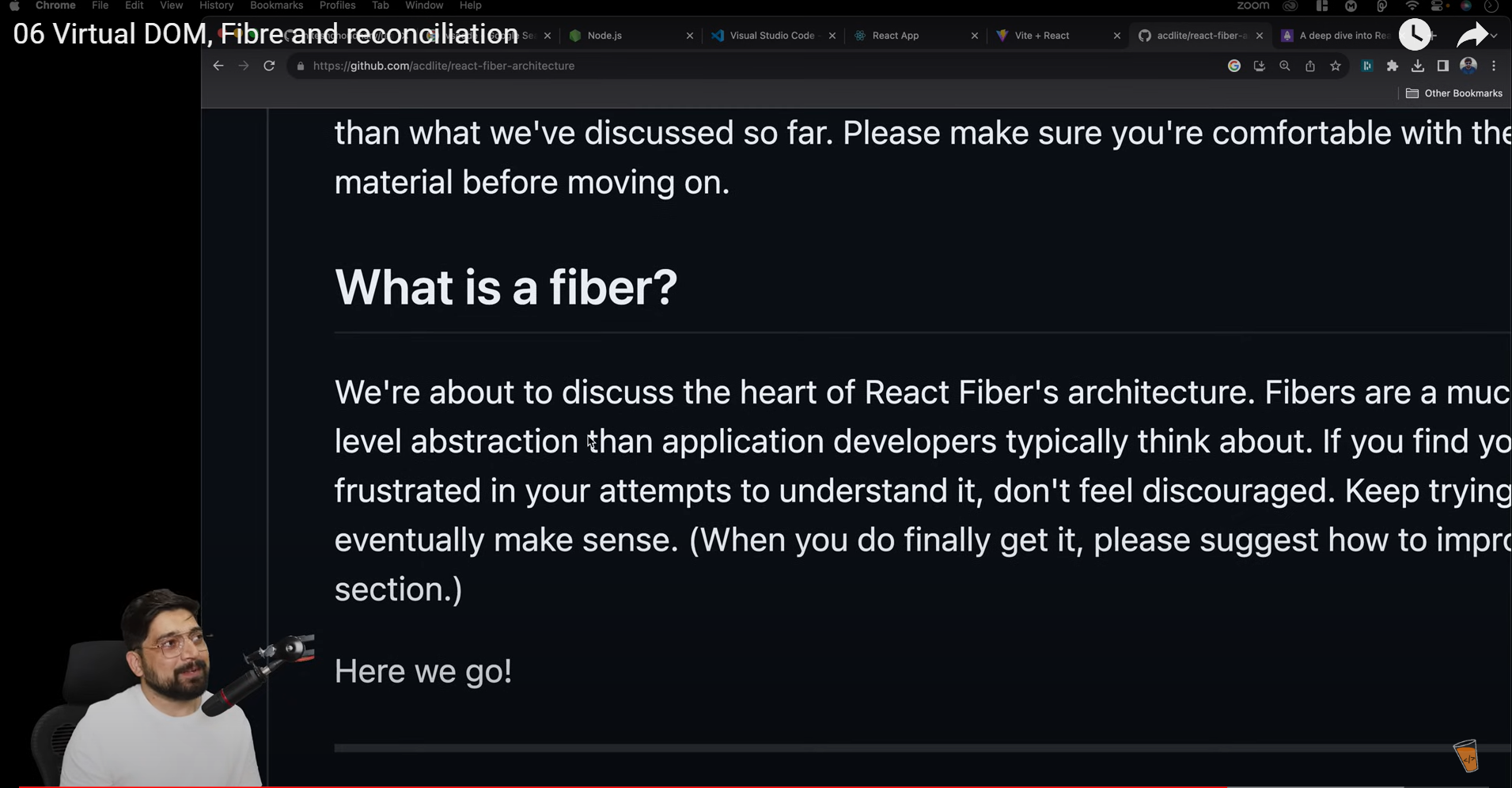Virtual DOM, Fiber, and Reconciliation | Chai aur react tutorial #6 Summary
 Vishesh Gupta
Vishesh Gupta
[Video Based Summary
The](https://youtu.be/kAOuj6o7Kxs?si=IQN1fS60P5rW8-Zk) video starts off with a fun and relatable story from the teacher. He shares an experience where he visited a doctor due to symptoms like coughing, sneezing, and a headache. The doctor prescribed medicine for fever, which the teacher found odd since he didn’t have a fever. When he questioned the doctor about it, the doctor responded, “Who’s the doctor here—you or me? I know what I’m doing, and you’ll need this fever medicine later tonight.”
This story connects to the lesson: sometimes you may not understand why you're learning something right away, but you’ll realize its importance down the line. With that story in mind, the teacher dove into the concepts of Virtual DOM, Fiber, and Reconciliation, explaining that even if these topics don’t seem essential now, they’re critical to understanding React better in the long run.
Key Concepts from the Video:
Virtual DOM: The video explains how the Virtual DOM used to be a key feature of React, but with the introduction of Fiber, some things have changed. While the Virtual DOM is still relevant to understand, React has moved toward using Fiber to handle updates more efficiently.
The Virtual DOM is essentially a lightweight copy of the actual DOM (Document Object Model). When a user interacts with the app, changes are first made in this Virtual DOM. Then, React compares the Virtual DOM to the real DOM using something called the diff algorithm. This process is called Reconciliation. If there are changes, React decides which updates need to be applied to the real DOM.
Fiber: Fiber is React’s latest engine, introduced to improve the performance of the Virtual DOM’s reconciliation process. With Fiber, React can now break down complex tasks into smaller units, making it easier to prioritize tasks and render components more efficiently.
Task Prioritization: React can now prioritize tasks, deciding which updates are more urgent and which ones can wait. This is a major performance boost, especially for complex apps that have frequent UI updates.
Reconciliation: Reconciliation is the process of comparing the Virtual DOM with the real DOM to find out which parts of the UI need to be updated. This process uses a diffing algorithm, which ensures that only the necessary changes are made to the DOM, optimizing performance.
The Diff Algorithm: React uses the diff algorithm during reconciliation to detect changes between the Virtual DOM and the actual DOM. Fiber helps this process by allowing more efficient updates based on which tasks need immediate attention and which can be delayed.
In this video, we explored how React's Virtual DOM works, the introduction of Fiber for improved performance, and the process of reconciliation, which ensures smooth and efficient UI updates. The priority of tasks and how React manages multiple updates at once is an essential takeaway from this lesson.
Short Summary of what I have learnt in this video
The video focused on understanding the Virtual DOM in React. The Virtual DOM is like a blueprint of your UI that React uses to efficiently update the actual DOM. Think of it as a draft of your UI, where React makes changes to the draft before applying them to the final version.
Key Concepts:
Virtual DOM: A lightweight representation of the actual DOM. It's used to efficiently update the UI.
Fiber: A new rendering architecture in React that improves performance by allowing React to prioritize and schedule updates more efficiently.
Reconciliation: The process of comparing the old and new Virtual DOMs to identify the minimum set of changes needed to update the actual DOM.
Key Props: A special attribute assigned to elements within lists. They help React efficiently identify which elements have changed, added, or removed, improving performance.
In a nutshell: React uses the Virtual DOM and Fiber to efficiently update the UI. Key props help optimize rendering for lists. This combination makes React a powerful and performant tool for building user interfaces.
Subscribe to my newsletter
Read articles from Vishesh Gupta directly inside your inbox. Subscribe to the newsletter, and don't miss out.
Written by
